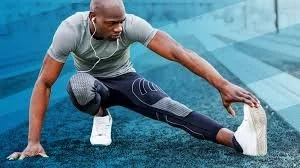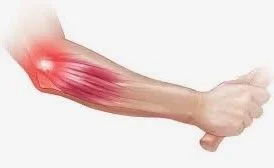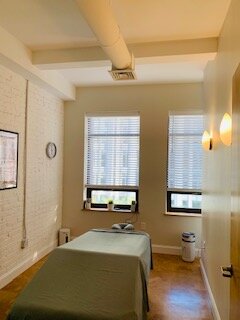Massage guns, or tools as I prefer to say (gun and massage don’t seem to belong together, but for the sake of consistency we’ll stick with guns for this post) have become very popular for recovery and self care in recent years—and for good reason. As a massage therapist, and frequent user of one myself, I’ve seen firsthand how these devices can support muscle health, reduce soreness, and extend the benefits of professional massage. If you’ve been wondering whether a massage gun is worth it, my answer is yes—with the right approach, it can be a fantastic addition to your self-care routine.
Why Massage Guns Work
Massage guns use rapid percussion to stimulate muscles, boost circulation, and relieve tension. Think of them as a way to “wake up” tight or tired tissue. The rhythmic pulses increase blood flow, help flush out metabolic waste, and relax areas that tend to hold stress—especially after workouts, long commutes, or time spent at a desk.
Top Benefits of Using a Massage Gun
Quick recovery: Perfect for post-exercise soreness or tight muscles after a long day.
Daily maintenance: Keeps muscles flexible and reduces buildup of chronic tension.
Convenience: You can use it anytime—morning, evening, at home, or even before a workout, and it doesn’t take much, 3-5 minutes to get benefits
Boosts your professional massage results: Using a massage gun between sessions helps maintain your progress and prolongs the effects of hands-on therapy.
How to Use It Safely and Effectively
Start with the lowest speed setting and move the gun slowly over large muscle groups like the quads, calves, or back. Avoid bones, joints, and sensitive areas as the gun will have a tendency to bounce off of these harder tissues, not to mention feel uncomfortable. When you inevitably come across and area of tension, move a bit more slowly and intentionally, even sinking into the tissue a bit to get that area to relax and release.
If you’re not sure where to start, ask your massage therapist for guidance. All of our therapists are experienced in using massage guns themselves, as well as demonstrating proper techniques to our clients.
A GREAT COMPLIMENT TO MASSAGE THERAPY
While massage guns can’t replace the intuition and assessment that come from a skilled therapist, they make an excellent companion tool. Think of them as a bridge between your professional sessions—helping your body stay looser, recover faster, and feel better every day.
The Bottom Line
If you’re looking to take better care of your body, investing in a massage gun is a smart move. It’s like having a mini-massage on demand—one that helps you move better, recover faster, and fill in the gaps between massage sessions when an area of tension is getting in the way of your activity or peace of mind.
What We Recommend
The massage gun that we use and recommend based on quality, price point, battery capacity, and ease of use is called the Bob and Brad gun. Silly name? Sure, but it was designed by two Physical Therapists who have had a lot of success on YouTube with videos instructing their patients with stretching, exercising, and other PT related topics. Here’s an Amazon link if you’re interested, as well as a link to their site if you would like more information:
Amazon Link:
https://www.amazon.com/Percussion-Handheld-Electric-Massager-Relaxation/dp/B09BB51M19?th=1
Bob and Brad Link:
https://www.bobandbrad.com/products/bob-and-brad-t2-massage-gun
As always, if you have any questions, please don’t hesitate to ask your therapist or email us at: info@bewellboston.com.
- Jim













